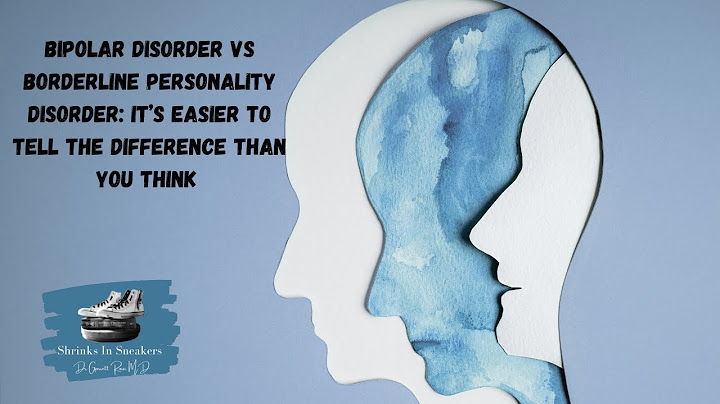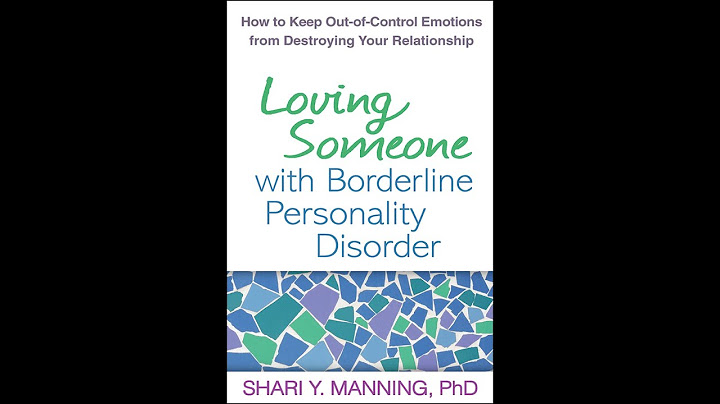Trigger
Warnings: This article will mention suicide. If you are struggling with thoughts of suicide because of your bipolar disorder, or for any other reason, please call the National Suicide Prevention Hotline: 1-800-273-8255 Bipolar disorder is a mental health condition in which a person shifts between mania, hypomania, and depression intermittently. Experiences with mood can last for many weeks to many months, then seemingly change from one day to the next into the next mood. Mania in
bipolar is illustrated with feelings of grandiosity, insomnia, high energy, creativity, and feelings of invincibility. Depression is the opposite. Especially after episodes of mania, bipolar depression includes feelings of worthlessness, low energy, exhaustion, fatigue, and cognitive fog. Many people with bipolar feel out of control of their emotional and psychological lives. They turn to behaviors like substance abuse and self-harm to cope with their difficult feelings. Bipolar disorders has
high risks of drug addiction, alcoholism, attempts at suicide, and more destructive behaviors to cope with the intense levels of emotions. Though bipolar can have many characteristics and symptoms recent research found that bipolar disorder has a higher occurrence of three specific personality traits in particular, especially compared to people without bipolar disorder. The study came from Swedish researchers who wanted to discover differences in personality traits between people
with bipolar I and bipolar II disorders as well as people without bipolar I or bipolar II. Generally, the researchers found, the three personality traits which are more common in bipolar I and bipolar II are: neuroticism, aggressiveness, and disinhibition. Someone who is neurotic is someone who is deeply stressed to a point of becoming detached from reality. Their stress can come from varying symptoms which pull from all different kinds of mental health
disorders. Regularly shifting moods, which is common in bipolar, is common in people who are neurotic. People who experience extraversion are people who are outgoing socially and go after what they want in life. When someone with bipolar I or bipolar II experiences mania, they tend to become extraverted as opposed to when they are depressed and will be more introverted. Part of what makes the mania so powerful is the feeling people with bipolar experience after being introverted and having the
energy to be extraverted. Lastly, disinhibition is typically a lack of organization, acting rashly, and feeling misdirected in life. If you are struggling with bipolar disorder and you are turning to drugs and alcohol or other destructive behaviors, there is hope. Help is available to you to recover. Avalon By The Sea is a state recognized primary mental health treatment facility in addition to provider of substance abuse treatment. Our certified excellence in both fields makes
our dual diagnosis treatment exemplary, providing trusted treatment with trusted results. Call us now for a confidential assessment and more information by calling 888-958-7511. Learn the differences between these two disorders, how to spot the signs of each, and how to treat them. What is bipolar disorder vs. borderline personality disorder? Both diagnoses have been in the headlines, but many may wonder: what’s the difference? Changing moods can often be a natural response to stressful situations. But for some, mood shifts are so extreme that they could be a sign of these more serious conditions, both of which are characterized in part by major mood swings, according to Frank Yeomans, M.D., Ph.D., director of training at the NewYork-Presbyterian Borderline Personality Disorder Resource Center, an internationally recognized center for the study of personality disorders. “This partial similarity in mood shifts, going from an extremely high mood to a very low mood, causes many people, including some clinicians, to confuse the two disorders,” says Dr. Yeomans, who is also a clinical associate professor of psychiatry at Weill Cornell Medicine Department of Psychiatry and an adjunct associate professor of psychiatry at the Columbia University Vagelos College of Physicians and Surgeons Center for Psychoanalytic Training and Research. “Yet they are two distinct and serious diagnoses with different symptoms that require different methods of treatment.” Mental health has moved more into the spotlight since the onset of the pandemic, with COVID-19 triggering a 25% increase in the prevalence of depression and anxiety worldwide, according to the World Health Organization. As for bipolar disorder and borderline personality disorder, these illnesses affect millions of Americans. Bipolar disorder is estimated to affect somewhere between 1 and 2.8% of U.S. adults, and studies show the prevalence of borderline personality disorder to range from 1.4 to 5.9% of the American adult population. How do you know if you or someone you love suffers from one of these disorders? And how can you tell the difference? Health Matters spoke with Dr. Yeomans to define these disorders and explain the telltale signs and how to treat them. What does borderline personality disorder look like? For example, if a boyfriend or girlfriend does not return your call, instead of being annoyed and moving on, the combination of dejection and anger in a person with borderline personality disorder could possibly lead the person to cut their own wrists. Such destructive actions, usually of an impulsive nature, are a way of putting intense feelings, like rejection and anger, that you can’t tolerate, into action in an attempt to discharge the emotion rather than to continue to feel its intensity. The behavioral manifestations of intense emotions, in addition to self-cutting, include substance abuse, eating disorders, and sexual promiscuity — dramatic ways of behaving that stem from not being able to manage emotions. In discussing disorders that involve changes in mood, it is important to make clear that not all depressed states indicate a psychiatric condition. If your spouse walks out on you or you lose a parent, it’s normal to feel depressed. In such cases, the depression may be an ongoing, terribly low, dejected mood but is appropriate to the circumstances. The borderline person demonstrates more reactivity to relatively minor events and demonstrates contradictory emotions that erupt over a short time. How does borderline personality disorder affect relationships? Where does the behavior stem from? What is the cause of this disorder? Developmental factors, including problems with emotional attunement between a developing child and caregivers, seem to play a role, as do physical or sexual abuse, or emotional neglect. However, it’s important to note that in cases with a history of trauma, the disorder seems to stem from a combination of temperament and trauma rather than trauma alone, since many people who have experienced trauma early in life do not go on to develop serious psychiatric illnesses. How is borderline personality
disorder treated? Transference-focused psychotherapy emphasizes the observation and interpretation of patient behavior in the relationship with the therapist to help identify unrecognized or distorted internal emotional states that are activated in relations with others and then to integrate them into a more coherent sense of self that includes emotional balance. Mentalization-based therapy similarly helps individuals recognize their mental states and be aware of them in their relations with others. Good psychiatric management is based on a case management model that combines a focus on the environment of the patient, psychoeducation, supportive therapy, and possibly family therapy.  Dr. Frank Yeomans What is bipolar disorder? For example, someone with bipolar disorder in a depressed state could be totally dejected, hopeless, and morbid, with no will to live. If they are in a manic state, they might be up all night writing page after page of a novel or playing music, with a sense that they have passed into a special state of genius. They might speak at a rapidly accelerated pace, with actions that are out of sync with appropriate social behavior — like disrobing and dancing in a park without awareness that it’s inappropriate. A full-blown manic episode shows a period of energy that could go on for days without any relief and would exhaust anybody else. In between the depressed and manic states, they may have periods of stable mood. In another variant of the disorder, some bipolar patients experience repeated depressive states without full-blown manic states; this is referred to as bipolar 2. What is the cause of bipolar disorder? How is bipolar disorder treated? What are the key differences between the disorders? Bipolar disorder is more rooted in the biology of the nervous system and more responsive to medication. Borderline pathology strongly involves the psychological level of the mind – the way meaning is generated – in addition to the biology of the brain and nervous system. A more biological condition like bipolar lacks these deeply rooted psychological aspects, or ways of seeing the world and perceiving the self and others, that characterizes borderline disorders. Mood swings of bipolar disorder are more random and less related to events than those of borderline. Those with bipolar might have a hair-trigger kind of response during an episode, whereas the borderline person has a hair-trigger response all of the time. What is important
for people to know? We recognize that finding the right specialist for this disorder is a problem people all across the country and the world have. To address this, we established a unique and valuable resource, the NewYork-Presbyterian Borderline Personality Disorder Resource Center. The Resource Center is a website and call center devoted to education about the disorder and to referring people to the proper specialists. We’ve had calls from literally all over the world and have connected people with help all the way from Australia to Russia and every place in between. In addition to the website, the center has an office at the NewYork-Presbyterian Westchester Behavioral Health Center campus staffed by a senior social worker. Learn more about psychiatry and mental health services at NewYork-Presbyterian. At A GlanceFeatured ExpertRead More: Mental Health, anxiety, bipolar disorder, borderline personality disorder, Borderline Personality Disorder Resource Center, depressed, Frank Yeomans, personality, psychiatrist, psychiatry, therapy What personality type is bipolar?Bipolar disorder, also known as manic depressive disorder, is a type of personality disorder where mood swings can range from extreme highs to extreme lows. The two sides of bipolar disorders are called mania (extreme high) and depressive (extreme low).
How should a bipolar person behave?Supporting someone with bipolar disorder. Be open about bipolar disorder.. Make a plan for manic episodes.. Discuss behaviour you find challenging.. Learn their warning signs and triggers.. Try not to make assumptions.. Look after yourself.. What are people with bipolar good at?Positive psychological traits of spirituality, empathy, creativity, realism, and resilience are frequently observed in bipolar individuals [239]. By gaining a better appreciation for the positive aspects of mental illness and exploring methods to enhance these traits, we may improve clinical outcomes [240].
What are coping skills for bipolar?Developing and sticking to a daily schedule can help stabilize the mood swings of bipolar disorder. Include set times for sleeping, eating, socializing, exercising, working, and relaxing. Try to maintain a regular pattern of activity even through emotional ups and downs.
|

Related Posts
Advertising
LATEST NEWS
Advertising
Populer
Advertising
About

Copyright © 2024 moicapnhap Inc.
















